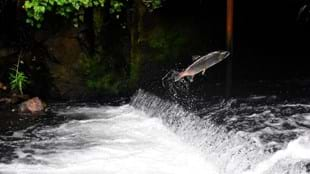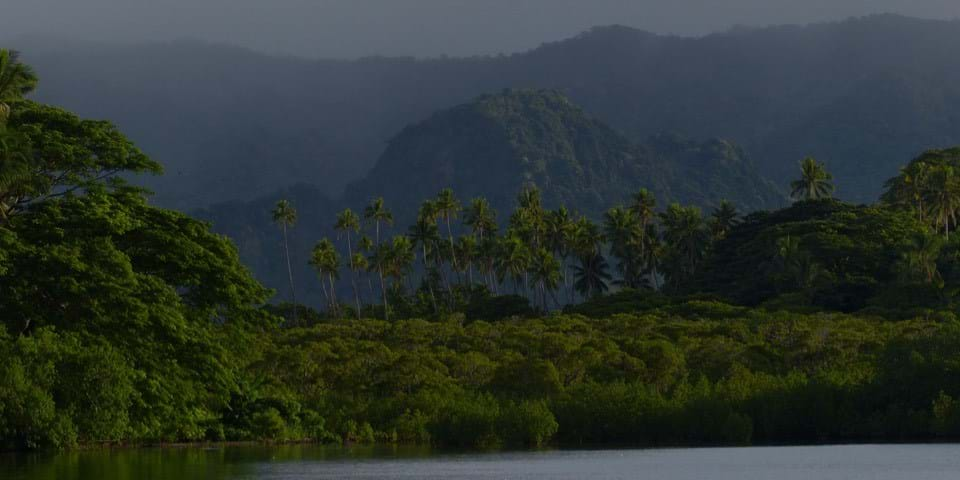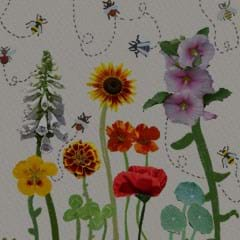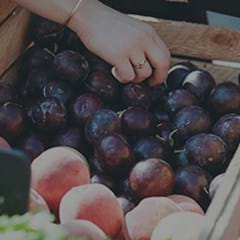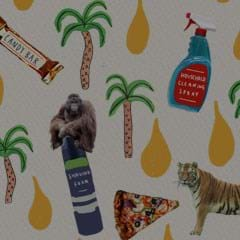If you’re interested in maintaining good health, then salmon is one of the best foods you can eat. High in omega-3 fatty acids, a great source of protein, and low in saturated fat, the American Heart Association recommends eating at least two 3.5-ounce (100g) servings of fatty fish like salmon every week. And if you’re interested in eating food that’s delicious, quick to prepare, fits into a variety of cuisines, impresses guests, and is endlessly varied in preparation, salmon is great too. What’s not to like?
There’s just one glaring problem with salmon. It used to be a luxury, and it’s not anymore. It’s become cheap, and that’s not necessarily a good thing. While global wild salmon stocks have halved in just a few decades, half the salmon sold worldwide these days comes from salmon farms, where the fish are raised in sea cages or nets. It’s a lot of fish; the annual global production of farmed salmon has increased from 27,000 metric tons to more than 1 million in the past two decades.
In fact, our appetite for all fish is only increasing. In 2016, total global fish production reached an all-time high of 171 million tonnes, of which 88 percent was for direct human consumption. Per capita, we each ate a record-high 20.3kg of fish that year. Since 1961 the annual global growth in fish consumption has been twice as high as population growth, which even outpaced all the meat from terrestrial animals. But because a third of our fish stocks are being fished over their capacity to regenerate, more and more of that fish is farmed. To feed us all that protein, aquaculture has gone from providing five percent of the world’s fish to nearly 50 percent in just 40 years.
We’ll be eating more in the future, too. The aquaculture industry is the world’s fastest growing food production sector, according to The State of World Fisheries and Aquaculture, a 2018 report from The United Nations Food and Agriculture Organization. It predicts that by 2030, the world will eat 20 percent more fish (or 30 million tonnes live equivalent) than in 2016. Aquaculture production that year is projected to reach 109 million tonnes, a growth rate of 37 percent over 2016.
It’s good news for sushi lovers – and isn’t it better to eat farmed fish than endangered wild stocks? Well, not necessarily. There’s an ongoing debate about exactly how good farmed fish is for us, the fish, and the environment. In the case of salmon, which has become America’s second favorite fish to eat (after shrimp), locking up a carnivorous, migratory animal that evolved to leap up rivers to spawn has led to problems in the pens.
First, there are the sea lice. Lepeophtheirus salmonis, or the common salmon louse, is a major issue for salmon farmers. The parasite attaches onto salmon and kills them, as well as causing skin lesions or bacterial infections. Those diseases can also spread to wild fish populations. It’s become such a problem that fish farmers worldwide must collectively spend more than £1bn (US$1.26b) a year trying to eradicate lice and the viruses and diseases they bring.
To do that, and control other illnesses, they use antibiotics and pesticides which then pollute oceans, rivers, lakes, and lochs – waterways that are already under strain from human and animal antibiotic load. In Scotland alone, thousands of kilograms of antibiotics are applied to salmon farms every year. This adds to the global problem of drug-resistant bacteria, which can cause antibiotic-resistant diseases in humans. Fish farmers are also reverting to mechanical means to get rid of the lice, which include running the fish through hot water and tumbling them, both of which have led to high death rates and concern from animal welfare advocates.
A second major issue is the diet of farmed salmon. They’re fed on kibble that helps them grow to maximum size very quickly (typically, they’re harvested at 10-18 months; wild salmon can live until 16). This contains ingredients such as fish oil for those omega-3s, bloodmeal from cattle, pigs, and sheep and ground-up feathers (which may alarm pescatarians), genetically-modified yeast, soybeans, corn gluten, and even chicken fat.
Because wild salmon are carnivorous, getting their color from carotenoids in their diets of krill and shrimp (which is also why flamingos are pink), the flesh of farmed salmon is actually white or grey. Fish farmers color the flesh with astaxanthin to give it that deep orange or pinky-red tone. This diet also means that farmed salmon are nutritionally inferior to wild salmon; the dominance of corn and soy means the salmon flesh is lower in good omega-3 fatty acids and higher in problematic omega-6s.
“If you do choose salmon, choose wild, sustainably-caught salmon when possible, and check the environment in which it was caught is pollution-free.”
Farmed salmon also eat prey fish – herrings, sardines, and anchovies, taking these stocks out of the ocean food chain. Non-profit ocean advocacy group Oceana blames this practice for the worldwide decline of wild salmon, tuna, bass – but also of whales, dolphins, seals, sea lions, albatross, penguins, and other species that rely on the small fish to survive. “We have caught all the big fish, and now we’re going after their food,” it says.
Another issue is that the nets, cages and pens aren’t fail-safe. A significant number of farmed salmon escape and breed with wild stocks, causing genetic issues and affecting wild habitats. While back in the pens, uneaten feed and salmon faeces pollute the sea bed under the cages.
Not all salmon farms have all these issues. For example, some salmon farms don’t use antibiotics and haven’t been affected by sea lice, as chinook or king salmon are naturally resistant. But they are still subject to the problems of any intensive farming operation, whether land or sea. Animal welfare advocates argue they are liable to suffer high mortality rates from overcrowding, injury and disease, and that the manipulations required in breeding, sorting, vaccinating and transportation cause stress and pain. They suffer skeletal deformities, and the waste still goes untreated into the ocean, contributing to algal blooms. And with a warming climate, warmer ocean temperatures bring more challenges with biosecurity and potential for bacterial infection.
So, when you eat farmed salmon, you’re not necessarily doing wild stocks a favor. Depending on where the salmon has come from, you may unwittingly be supporting an industry that threatens the food supply of wild sea creatures, spreads disease, causes antibiotic resistance, and pollutes our waterways further.
However, people like to eat salmon. So how can you ensure your own consumption is ethical and sustainable? Salmon is still good for your health. If you do choose salmon, choose wild, sustainably-caught salmon when possible, and check the environment in which it was caught is pollution-free. Try to find out how it was caught, too. Seafood watchdogs such as the Environmental Defense Fund’s Seafood Selector considers wild Alaskan salmon to be one of the most sustainable fisheries. The five species of wild Alaskan salmon (chinook, chum, coho, pink, and sockeye) all come from well-managed fisheries and are low in contaminants.
If you have to choose farmed, the Seafood Selector helps with that, too. It says farmed or Atlantic salmon raised in indoor recirculating tanks is a better choice, as they have a lower risk of spreading disease and discharging effluent. Look for labels marked “tank-based” or “land-based”.
The absolute worst choice is farmed Atlantic salmon raised in conventional net pens.
Eating salmon with the lowest impact may require some research and asking questions of suppliers and store owners, but it’s up to every consumer to ensure that the salmon on their plate tonight is going to mean others can enjoy it in the future, too.
There is also one other option. If omega-3 is your main priority in consuming salmon, you can get it from plant-based sources such as flaxseed, soy, walnuts, or hemp. Consider treating salmon like we used to: a rare and luxurious treat. Whenever something is cheap – whether clothing, fuel, or food – its true cost is usually hidden somewhere else.
Naomi Arnold is a New Zealand-based author and writer specializing in environmental and health issues.



